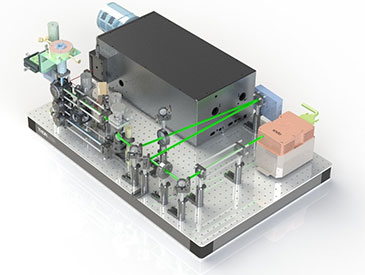29 October 2014
A device which allows users to hold airborne particles – aerosols – for extended periods has been developed by a team at the University of Bristol and Portishead-based firm Biral.
The AOT-100 Aerosol Optical Tweezers, which is capable of holding and manipulating single or multiple particles for indefinite lengths of time using light, is the result of a project funded by an Impact Acceleration Award from the Engineering and Physical Sciences Research Council (EPSRC).
Aerosols play a vital role in many processes and studying their evolution with time is vital to developing a detailed understanding of fields as diverse as climate change and drug delivery to the lungs. Recently, aerosol optical tweezers have been used by the Bristol group to simulate the processes occurring in cloud droplets.
Conventional aerosol instruments rely on taking snapshots of the characteristics of a single particle at a single point in time and preclude the study of any time-dependent processes. By trapping particles in the focus of a laser beam, the AOT-100 allows many different parameters to be studied continuously over times that vary from milliseconds to hours.
The system is based on the research instrument designs developed by Professor Jonathan Reid’s Aerosol Research Centre at the University of Bristol.
The objective in developing the design has been to retain as many of the established principles as possible while making the instrument a readily usable tool that can be easily operated by non-specialists.
The design has also made the AOT-100 as compact as possible given the size of the constituent components and the optical path lengths required.
Professor Reid said: “It has been exciting to see the evolution of a laboratory based research instrument into a versatile and accessible tool for studying aerosols over the last ten years. I hope that many future users will gain significant insights into aerosol processes using this technique.”
The team has just made its first sale of the AOT-100 to a government lab in the US.
About the University of Bristol Aerosol Research Centre
Research at the Bristol Aerosol Research Centre (BARC) is focused on improving our understanding of the physical and chemical properties of aerosols at a single particle level. Particles are manipulated with light or charge and characterised by spectroscopy. Experiments are studying processes that are relevant to aerosols in the atmosphere, in the delivery of drugs to the lungs and in spray drying. BARC is based in recently refurbished laboratory and office space in the School of Chemistry at the University of Bristol.













